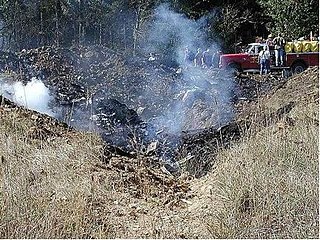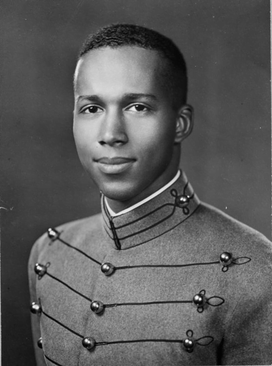
Shanksville is a borough in Somerset County, Pennsylvania, United States. It has a population of 197 as of the 2020 U.S. census. It is part of the Somerset, Pennsylvania Micropolitan Statistical Area and is located 78 miles (126 km) southeast of Pittsburgh and 226 miles (364 km) west of Philadelphia.

Marine Corps Air Station Miramar, formerly Naval Auxiliary Air Station (NAAS) Miramar and Naval Air Station (NAS) Miramar, is a United States Marine Corps installation that is home to the 3rd Marine Aircraft Wing, which is the aviation element of the 1st Marine Expeditionary Force. It is located in Miramar, San Diego, California, about 14 miles (23 km) north of Downtown San Diego.

Aerial firefighting, also known as waterbombing, is the use of aircraft and other aerial resources to combat wildfires. The types of aircraft used include fixed-wing aircraft and helicopters. Smokejumpers and rappellers are also classified as aerial firefighters, delivered to the fire by parachute from a variety of fixed-wing aircraft, or rappelling from helicopters. Chemicals used to fight fires may include water, water enhancers such as foams and gels, and specially formulated fire retardants such as Phos-Chek.

Lady Be Good is a B-24D Liberator bomber that disappeared without a trace on its first combat mission during World War II. The plane, which was from 376th Bomb Group of the United States Army Air Forces (USAAF), was believed to have been lost—with its nine-man crew—in the Mediterranean Sea while returning to its base in Libya following a bombing raid on Naples on April 4, 1943. However, the wreck was accidentally discovered 710 km (440 mi) inland in the Libyan Desert by an oil exploration team from British Petroleum on November 9, 1958.

The Combat Action Medal (CAM) is a decoration of the United States Air Force and United States Space Force to recognize airmen and guardians for active participation in ground or air combat.

Operation Halyard, known in Serbian as Operation Air Bridge, was an Allied airlift operation behind Axis lines during World War II. In July 1944, the Office of Strategic Services (OSS) drew up plans to send a team to the Chetniks force led by General Draža Mihailović in the German-occupied Territory of the Military Commander in Serbia for the purpose of evacuating Allied airmen shot down over that area. This team, known as the Halyard team, was commanded by Lieutenant George Musulin, along with Master Sergeant Michael Rajacich, and Specialist Arthur Jibilian, the radio operator. The team was detailed to the United States Fifteenth Air Force and designated as the 1st Air Crew Rescue Unit. It was the largest rescue operation of American Airmen in history. According to historian Professor Jozo Tomasevich, a report submitted to the OSS showed that 417 Allied airmen who had been downed over occupied Yugoslavia were rescued by Mihailović's Chetniks, and airlifted out by the Fifteenth Air Force. According to Lt. Cmdr. Richard M. Kelly (OSS), a grand total of 432 U.S. and 80 Allied personnel were airlifted during the Halyard Mission. According to Robert Donia allied air operations over Partisan territory in Yugoslavia were strategically significant and extensive in scope. Evaders’ forms show that airmen landed on much of Yugoslavia from eastern Serbia to Slovenia and even on Bulgaria. Evacuees most frequently mentioned airstrips at Tičevo, Sanski Most and on the Croatian coastal island of Vis. Of the 2,364 flyers rescued from Yugoslavia, about 2,000 were extracted from Partisan territory and 350 from Chetnik controlled territory.

David Richard Kingsley was a United States Army Air Forces officer and a recipient of the United States military's highest decoration—the Medal of Honor—for his actions in World War II.

The Shanksville Volunteer Fire Department is a volunteer fire department in Shanksville, Pennsylvania. The department provides fire protection and emergency medical services to the boroughs of Shanksville and Indian Lake as well as to Stonycreek Township. The response area is approximately 62 square miles (160 km2) with an estimated 2,500 residents. Additionally the department is responsible for a 15-mile (24 km) stretch of the Pennsylvania Turnpike.

Oaklands Cemetery is a rural cemetery founded in 1854 in West Goshen Township, Chester County, Pennsylvania. It is located at 1042 Pottstown Pike and is approximately 26 acres (0.11 km2) in size.
This is a partial list of accidents and incidents involving the Boeing-designed B-17 Flying Fortress. Combat losses are not included except for a very few cases denoted by singular circumstances. A few documented drone attrition cases are also included.

Robert B. Tresville Jr. was an African American pilot who served in the original 332nd Fighter Group of the United States Army Air Forces, also known as the Tuskegee Airmen, during World War II. He was only the seventh African American to graduate from West Point. He was Commanding Officer of the 100th Fighter Squadron and was widely considered to be one of the 332nd Fighter Group's most promising leaders. He went missing in action after his plane went down over the Mediterranean Sea in June 1944.
This is a partial list of notable accidents and incidents involving the Consolidated-designed B-24 Liberator. Combat losses are not included except for some cases denoted by singular circumstances. Consolidated C-87 Liberator Express and PB4Y Privateers are also included.

Memorial Hall for the U.S. Airmen Killed In Action During World War II in Namhae, Namhae Island, South Korea is dedicated to the 11 U.S. Airmen who were killed when their B-24 Liberator crashed into the mountain peak on Namhae returning from a bombing mission early in the morning of August 8, 1945, after being damaged by Japanese artillery, and to Kim Deok-hyeong, who single-handedly buried the 11 men, used his own funds to build a monument at the crash site, and establish the Memorial Hall where ceremonies are still held each year for the Airmen.

The Ålvand Allied bomber crash refers to the shooting down of the Allied Avro Lancaster PB202 by a German night fighter over the small lake Ålvand, in the heathland east of Nørre Vorupør, Thy, Denmark, on the night of 29 August 1944. All of the seven crew were killed.

Walter Irving "Ghost" Lawson was a U.S. Army Air Force/U.S. Air Force officer and combat fighter pilot with the 332nd Fighter Group's 99th Pursuit Squadron, best known as the Tuskegee Airmen or "Red Tails". He was one of 1,007 documented Tuskegee Airmen Pilots.














